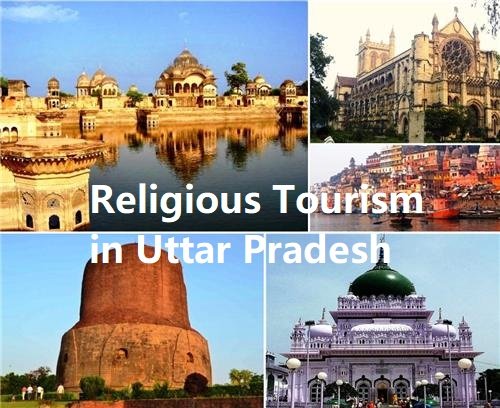AWIP, GS P5 (History, Polity, Governance...)
Q. Discuss the impact of religious tourism in Uttar Pradesh. Highlight both its positive aspects and the concerns associated with it.
Impact of Religious Tourism in Uttar Pradesh
Positive Aspects:
- Economic Growth:
- Revenue Generation: Religious tourism generates substantial revenue for the state. Pilgrimage sites like Varanasi, Ayodhya, and Mathura attract millions of tourists annually, contributing to the local and state economy.
- Employment Opportunities: It creates direct and indirect employment opportunities in sectors such as hospitality, transportation, retail, and local handicrafts.
- Infrastructure Development:
- Improved Connectivity: The influx of tourists necessitates better infrastructure, leading to improved road networks, enhanced railway services, and expanded airport facilities.
- Urban Development: Increased investment in urban amenities such as hotels, restaurants, and public facilities, which benefits local communities.
- Cultural Preservation:
- Heritage Conservation: The demand for authentic experiences encourages the preservation and restoration of cultural and historical sites.
- Cultural Exchange: Religious tourism fosters cultural exchange and understanding among visitors from different regions and countries.
- Social Development:
- Community Engagement: Local communities become more involved in tourism-related activities, promoting social cohesion and pride in their cultural heritage.
- Educational Opportunities: Increased awareness and interest in the region’s history, culture, and traditions among both tourists and residents.
Concerns Under a Democratic Setup
- Environmental Degradation:
- Pollution: Increased footfall can lead to pollution of sacred rivers (e.g., Ganga in Varanasi), littering, and degradation of natural habitats.
- Resource Strain: High demand for water, food, and energy resources can strain local supplies and lead to conflicts over resource allocation.
- Overcrowding and Infrastructure Stress:
- Overcrowding: Popular pilgrimage sites often experience overcrowding, which can strain local infrastructure, cause traffic congestion, and reduce the quality of life for residents.
- Wear and Tear: Historical and religious sites may suffer from wear and tear due to excessive visitor numbers, leading to the need for frequent maintenance and repairs.
- Commercialization and Cultural Erosion:
- Commercial Exploitation: The commercialization of religious sites may lead to the loss of their sanctity and spiritual value.
- Cultural Dilution: The influx of tourists can sometimes lead to the dilution of local customs and traditions, as communities adapt to cater to visitors’ preferences.
- Social Issues:
- Displacement: Infrastructure projects and urban development can lead to the displacement of local communities and loss of livelihoods.
- Inequality: Benefits of tourism may not be evenly distributed, leading to economic disparities and social tensions within the community.
- Safety and Security:
- Security Concerns: Large gatherings of people can be targets for criminal activities and terrorism, posing challenges for maintaining law and order.
- Health Risks: The congregation of large numbers of people can lead to public health issues, including the spread of infectious diseases.
Balancing Benefits
To maximize the benefits of religious tourism while addressing its concerns, a democratic setup can:
- Implement Sustainable Tourism Practices:
- Develop and enforce regulations to minimize environmental impact.
- Promote eco-friendly practices among tourists and local businesses.
- Enhance Infrastructure Responsibly:
- Invest in sustainable infrastructure that can handle high tourist volumes without compromising local needs.
- Ensure that development projects include provisions for local community welfare.
- Promote Inclusive Growth:
- Ensure that the economic benefits of tourism are distributed equitably among local communities.
- Provide training and support to local entrepreneurs and workers.
- Preserve Cultural Integrity:
- Encourage the preservation of local traditions and customs.
- Balance commercial interests with the need to maintain the spiritual and cultural sanctity of religious sites.
- Strengthen Governance and Community Participation:
- Engage local communities in decision-making processes related to tourism development.
- Enhance security measures and emergency response systems to protect tourists and residents alike.
By adopting a balanced and inclusive approach, Uttar Pradesh can harness the potential of religious tourism to drive sustainable development while safeguarding the interests of its residents and preserving its rich cultural heritage.


